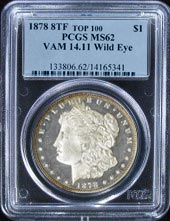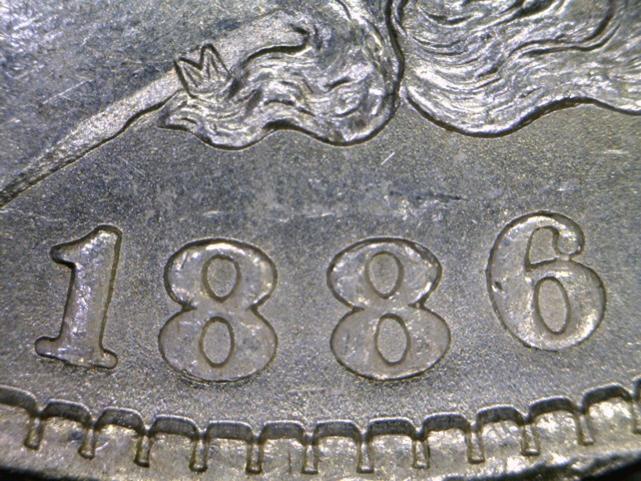-
- Coming Soon!
-
- Coming Soon!
-
- Coming Soon!
VAMLINK Articles
Last Revision: October 2019
What’s it Worth?
A Process Based on the Axiom: Knowledge is King!
An approach I’ve personally found useful when deciding whether or not to acquire a particular VAM is to use the following thought process, where you ask yourself these questions:
- Is the coin raw or graded by a Third Party Grading Service (TPGS)? Raw ungraded coins are dangerous for all but those best at grading.
- If graded professionally, which TPGS holder is it in? Coins in some holders tend to bring higher prices and are more easily sold.

- Is the coin graded correctly, no matter what holder it’s in? Grading mistakes are occasionally made at every grading service.
- Is the attribution correct on the holder? Don’t assume the attribution on the holder is the right one.
- If it’s a die break variety, what state is it? Early die states sometimes bring less than late die states, which are more dramatic.
- How often do you personally encounter this specific variety? Some so-called rarities tend to crop up rather frequently. Beware.
- How often do you see multiple listings of this variety in uncirculated grades? Varieties that are readily obtainable in Mint State tend to have much lower values in circulated condition.
- Is the coin lacking eye appeal, even if it’s technically graded correctly? An "ugly" coin is, more often than not, difficult to sell no matter what the grade!
- Does the coin grade at the top, middle or bottom of its grade range? All coins in the same grade are not valued equally, as each grade represents a range of surface conditions and states of preservation.
- If a coin grades "AU,"" is it AU50, AU53, AU55 or AU58? "AU" can be a pivotal grade, so remember there are more divisions to it. And recently, the grade of AU58 has been taking on greater importance when it comes to value.
- Does the coin have problems of ANY kind? Coin surfaces are the key ingredient to grading. Cleaning, dark or unattractive toning, scratches, or excessive bagmarks can, and usually do, seriously impact the coin’s value, regardless of the grade.
- Does the rim around the periphery of the coin evidence any damage? Collectors often forget the rims. Rim damage in the form of digs, bumps or scrapes is common to large coins like silver dollars, and these seriously impact desirability.
- Are there problems referenced on the slab or holder? Problems caught by the grading services are listed on the holder’s label, sometimes with or sometimes without a grade. Contrary to what many collectors believe, being in a "net graded" slab has a major negative effect on its value.
- What is the variety’s value as listed in reference publications? Using specialized price guides is IMPORTANT. As a frame of reference, value guides are a great starting point, but remember that prices are not cast in stone.
- And lastly, on a personal level, how badly do you want this particular coin? Take a step back from the coin. What is your "gut reaction?" Listen to it! Why? Years from now, you’ll probably be much harsher in your assessments of the coin’s qualities. So, think critically!
All rights Reserved © 2019 Jeff Oxman
No part of this writing or presentation may be reproduced by any means without the written consent of the author.
No part of this writing or presentation may be reproduced by any means without the written consent of the author.

 The 1921-D VAM 1X Early Die State
The 1921-D VAM 1X Early Die State What's it Worth?
What's it Worth? A Tribute to 8TF Morgans
A Tribute to 8TF Morgans The 1922-P "Moustache" Variety
The 1922-P "Moustache" Variety The Amazing 1886-O VAM 5
The Amazing 1886-O VAM 5